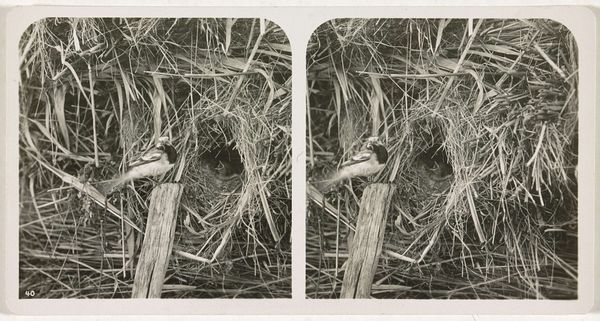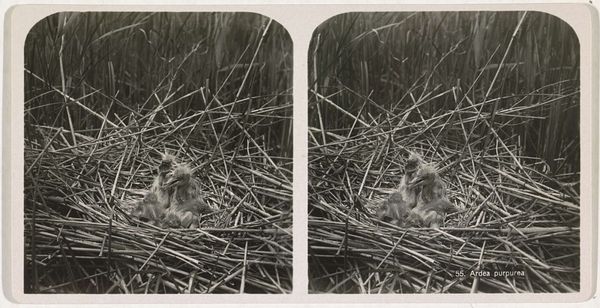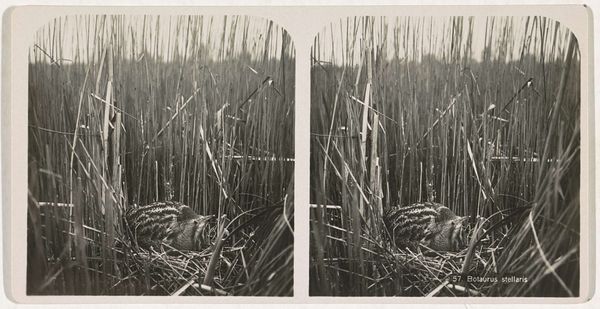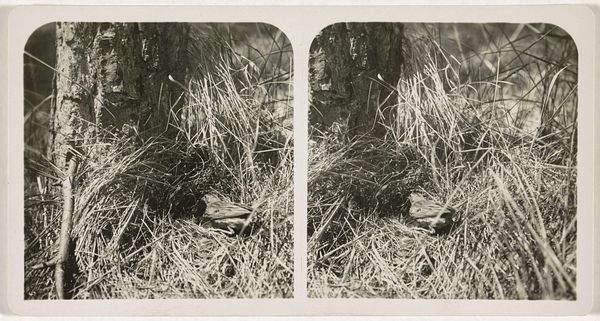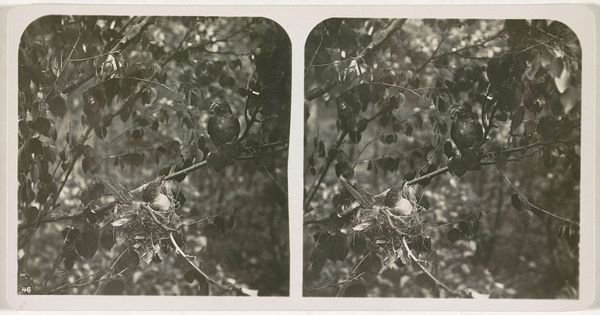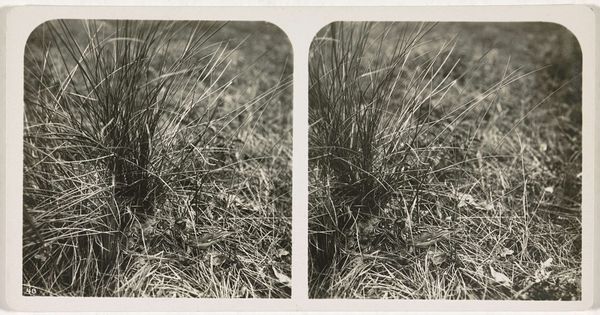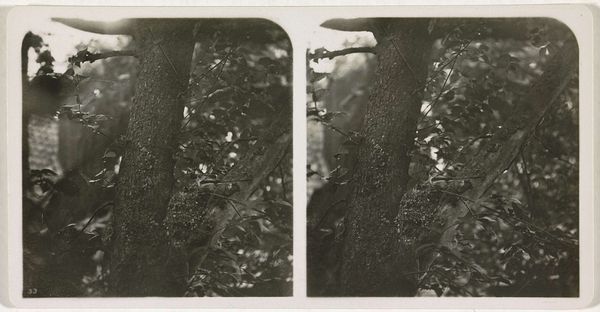
photography, gelatin-silver-print
#
photography
#
gelatin-silver-print
#
realism
Dimensions: height 86 mm, width 165 mm
Copyright: Rijks Museum: Open Domain
Editor: Here we have Adolphe Burdet’s “Winterkoninkje bij nest”, a gelatin-silver print, placing its creation somewhere between 1870 and 1940. The nest, obscured by reeds, has a secretive, almost voyeuristic quality. What can you tell me about how it operates in this way? Curator: Consider the labour involved in the photographic process during that time. The meticulous work of developing and printing such a detailed image speaks volumes. What materials were available, how accessible they were to different social classes; this informs not just the aesthetic, but the very possibility of its existence. Editor: So, the process influences our perception of the image itself? Curator: Absolutely. Look at the print itself: gelatin-silver. Think about the extraction, refinement, and industrial processes required. Burdet, likely privileged, gains access to these materials. How does this control and manipulation of resources manifest in the work, versus the raw reality of nature that he’s documenting? How does his method comment on this consumption and production? Editor: It's easy to forget the labour and materials that underpin even what seems like a candid nature shot. Thinking about his relationship to his resources gives the image new complexity. Curator: Indeed. Even the act of creating this "realistic" image challenges conventional divides of the natural and constructed, inviting us to confront how photographic mediums actively engage and negotiate social structures. Editor: Thanks, I hadn't thought about it that way. This discussion highlights how much the making shapes the meaning. Curator: My pleasure. It’s often what the materials reveal that goes beyond subject, or intent, creating richer meaning.
Comments
No comments
Be the first to comment and join the conversation on the ultimate creative platform.
